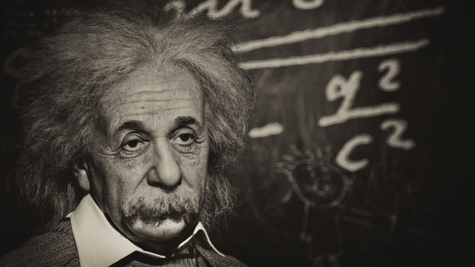Quantum Physics Simplified
February 27, 2017
What if every time someone set something down they actually lifted it up? What if every time someone jumped up they actually jumped down? What if every time someone spoke they actually said the opposite?
The quantum theory explains this. Although it is hard to understand, it can be broken down to be more easily comprehended. By having a better understanding of the quantum theory and quantum physics, one’s reality dramatically shifts.

Quite simply, quantum physics is the study of the universe and everything that it is made up of. In the world of the theory of quantum physics, recently, many have been wondering, was Isaac Newton right and Albert Einstein wrong?
Physicists have struggled to connect gravity to quantum physics for decades. Quantum physics can explain electromagnetic forces through photons. Although, physicists discovered that when one tries to use the quantum gravitation theory to explain the gravitation of two objects, a problem quickly arises- every single answer is infinity. Petr Hořava, a physicist at the University of California Berkeley, has found what he thinks to be the answer to the dilemma. Now, he says, the quantum gravity idea finalization is just a matter of time.
More specifically, the problem occurs with Einstein’s theory of general relativity. Einstein famously overturned the Newtonian theory that explained time to be always there, ticking away, in the background. Instead, Einstein argued that time is woven together through multiple dimensions, made malleable fabric that is distorted by matter. The stop is that in quantum mechanics, time retains its Newtonian qualities, providing a small period of time and a reachable state in which matter can dance but is not affected by its own presence. These two concepts of time don’t correlate or gel at all.
The problem, Hořava argues, is that the way Einstein describes the malleability of time is incorrect. Hořava says that the solution is to snip strings that bind space to time at very high energies, such as those found in the early universe where quantum gravity rules.
“I’m going back to Newton’s idea that time and space aren’t equivalent,” Hořava says. At low energies, generally relativity emerges from this underlying framework, and the fabric of space time re-stiches, he says.

Hořava’s theory, however, is far from perfect. Diego Blas, a quantum gravity researcher at the Swiss Federal Institute of Technology in Lausanne has found a “hidden sickness” in the theory when double checking calculations for the solar system. Blas and other physicists examined ideal cases, assuming the Earth and other planets are spheres, and he explained, “We checked the most realistic case, where the sun is a sphere, but not quite.” General relativity pretty much gives the same answer in both scenarios. But in Hořava gravity, the realistic case gives a very different result.
Hořava welcomes the accommodations to his idea. “When I proposed this, I didn’t claim I had the final theory,” he says. “I want other people to examine it and improve it.”
A few years ago, a quantum expert at CERN, Gia Dvali, tried a similar trick. Now though, he remains cautious to make more drastic leaps in his quantum gravity idea. His theory consisted of breaking apart space and time to explain dark energy. He very quickly abandoned his model because it allowed for communication to move faster than the speed of light.
“My intuition is that any models will have unwanted side effects,” Dvali says. “But if they find a version that doesn’t, then that theory must be taken very seriously.”






